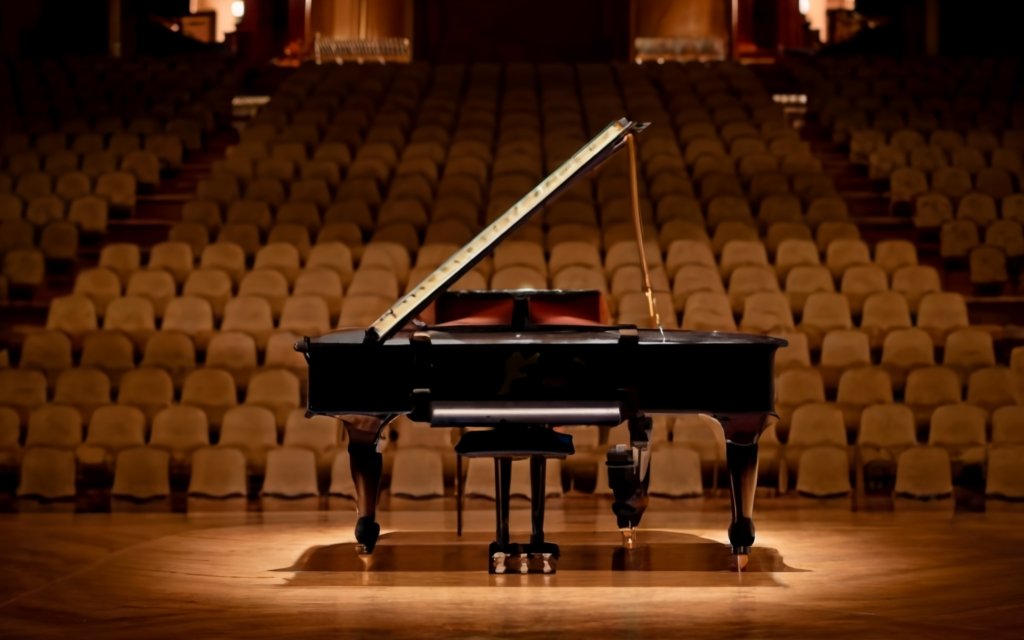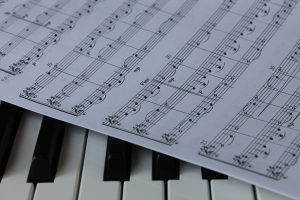Cadences are fundamental elements in music theory, serving as critical markers that signify the end of a musical phrase or section. Similar to punctuation in language, cadences bring structure and clarity to musical compositions, allowing for a logical progression of ideas and themes.
The importance of cadence in music extends beyond merely concluding a phrase; cadences also establish the tonal framework of a piece. By defining the start and end points of musical sections, they help in creating a sense of resolution and completeness. This is crucial in maintaining the listener’s engagement and understanding of the music’s narrative flow.
In practical terms, cadences are essential for musicians and composers. They provide a clear framework within which to innovate and express, guiding the emotional journey of the piece. Whether it’s building tension, providing relief, or creating surprise, the thoughtful use of cadences can significantly enhance the impact of a musical composition.

Diving deep into cadence types
Each cadence type, with its unique characteristics, plays a pivotal role in shaping the narrative and emotional journey of music. Let’s examine the nuances of these musical endings to better understand their impact on composition and listening.
The authentic cadence
When discussing ‘cadences in music theory,’ the authentic cadence stands out as one of the most prominent. Often referred to as a perfect cadence, this type encapsulates the quintessential resolution in music, creating a conclusive and satisfying end to a phrase.
Definition and examples of authentic cadences
An authentic cadence typically involves a progression from the V (dominant) chord to the I (tonic) chord. This ‘V-I’ progression is widely recognized for its strong sense of finality. For instance, in classical music, the end of a symphonic movement often employs an authentic cadence to provide a clear and decisive conclusion. In popular music, this cadence type is also prevalent, effectively signaling the end of a verse or chorus.
How authentic cadences contribute to musical resolution
The power of an authentic cadence lies in its ability to establish tonal stability. By returning to the tonic chord, it reinforces the key of the piece, offering listeners a sense of completion. This return to the ‘home’ chord is what makes the authentic cadence a fundamental aspect of ‘cadence music’ and a key player in creating memorable musical experiences.
In compositions, employing an authentic cadence can signal the end of a musical thought or prepare for a transition to a new section. Its clear-cut resolution is a tool composers use to guide listeners through the emotional landscape of the music, providing a sense of closure that is both expected and satisfying.
The plagal cadence
Often referred to as the ‘Amen Cadence,’ the plagal cadence is renowned for its softer resolution compared to the more definitive authentic cadence. It is a fundamental element in understanding the diversity of cadences in music theory.
Understanding plagal cadences with examples
A plagal cadence typically involves a progression from the IV (subdominant) chord to the I (tonic) chord. This ‘IV-I’ movement creates a sense of gentle finality. It’s often heard in hymns and church music, particularly at the end of a hymn when the word “Amen” is sung, hence its nickname. The plagal cadence is also a staple in jazz and pop music, offering a more subtle conclusion to phrases.
The use of plagal cadences in different musical contexts
What makes the plagal cadence stand out among different types of cadences is its versatility and emotional subtlety. It’s less final than an authentic cadence but still provides a satisfying sense of return. In songwriting and composition, a plagal cadence can offer a sense of conclusion without the stark finality, making it ideal for transitioning between sections or concluding a piece on a reflective note.
The plagal cadence’s unique quality lies in its ability to evoke a sense of calmness and closure. Its widespread use across various genres underlines its importance in the toolkit of composers and songwriters, further illustrating the richness and diversity of cadences in music.
The half cadence
The half cadence is a crucial component in the landscape of cadences in music, known for its role in creating tension and expectation rather than resolution.
Exploring the nature and examples of half cadences
A half cadence typically concludes on the V (dominant) chord, creating a pause that feels unfinished. This ‘hanging’ sensation is because the music doesn’t return to the tonic (I chord) but rather lingers on the dominant. This cadence is frequently used at the end of a phrase or section, leading listeners to anticipate further development. In classical compositions, half cadences are often employed before a key change or introduction of a new theme, keeping the listener engaged and curious.
The role of half cadences in creating musical suspense
The beauty of the half cadence lies in its ability to build suspense and expectation. By not resolving to the tonic, it invites listeners to wonder what comes next, maintaining interest and engagement. This is particularly effective in longer compositions where maintaining listener attention is crucial.
In various musical genres, from classical to contemporary, the half cadence is a tool for composers to craft a narrative that keeps the audience anticipating more. It’s a testament to the cadence’s power in shaping the emotional and psychological journey of music listeners.
The deceptive cadence
The deceptive cadence, as suggested by its name, is a master in defying expectations, playing a crucial role in the cadences music theory.
Defining deceptive cadences with examples
A deceptive cadence occurs when a chord progression leads to an unexpected chord instead of resolving to the anticipated tonic. Typically, this involves moving from the V chord to a chord other than the I chord, often the VI. This unexpected turn creates a sense of surprise and intrigue. In classical music, such as in the works of Bach or Mozart, deceptive cadences are used to prolong a piece or lead into another section. In modern music, this technique adds complexity and unpredictability, enhancing the listener’s engagement.
How deceptive cadences create surprise in music
The essence of a deceptive cadence lies in its ability to subvert the listener’s expectations. This not only adds a layer of sophistication to the composition but also keeps the music fresh and dynamic. It challenges the listener’s anticipation of cadence types and their traditional roles, making the experience of listening both stimulating and rewarding.
Deceptive cadences are a testament to the composer’s creativity, showcasing their skill in manipulating music cadence types to craft a unique auditory experience. Their use enriches the tapestry of musical storytelling, illustrating the diverse ways in which cadences in music can be employed to shape a composition’s emotional landscape.
The summary of the video
The video provides a comprehensive explanation of cadences in music, focusing on four primary types commonly recognized by musicians. A cadence is described as the way a composer ends a phrase, section, or piece of music, and it’s likened to punctuation in speech that prompts listener responses or enduring thoughts.
- The authentic cadence: This type offers a strong sense of completion, moving from the dominant (V) chord to the tonic (I) chord, embodying the classic tension-to-resolution transition. It has two subcategories:
- The perfect authentic cadence, where both chords are in root position with the tonic note on top of the tonic chord, adhering to traditional counterpoint rules.
- The imperfect authentic cadence, where one or both conditions of the perfect cadence aren’t met.
- The half cadence: This creates an unfinished feel, akin to a rhetorical question. It ends on the dominant chord, creating tension and setting up the expectation for a subsequent authentic cadence.
- The deceptive cadence: Starting on the dominant chord like an authentic cadence, it unexpectedly moves to a chord other than the tonic, often to the sixth. This cadence can transition smoothly to new song sections or stylishly delay an ending.
- The plagal cadence: Known as the “Amen Cadence,” it ends on the tonic chord but starts with the subdominant (IV) instead of the dominant. This cadence offers a gentler resolution compared to the authentic cadence, making it a versatile choice in various musical styles.
The picardy cadence
The picardy cadence, often a delightful surprise in music, represents a unique twist among the types of cadences in music theory.
Introduction to the picardy cadence
A picardy cadence, also known as a Picardy Third, is characterized by the sudden change from a minor key to a major key at the cadence. Typically, this occurs at the end of a piece in a minor key, where the final chord is unexpectedly played in major. This shift creates a bright, uplifting resolution that contrasts with the preceding minor tonality. It’s a technique that has been used since the Renaissance period and remains effective in modern compositions for its ability to add an unexpected yet pleasant turn.
Examples of picardy cadences in classical and modern music
In classical music, the picardy cadence has been used by composers like Bach and Haydn to provide an optimistic conclusion to otherwise somber pieces. In contemporary music, this cadence type can be a powerful tool for adding emotional depth or a sense of triumph at the end of a song. The sudden shift to a major chord can evoke feelings of hope and joy, making it a memorable end to a musical journey.
The picardy cadence’s ability to transition from a darker mood to a brighter one exemplifies the emotive power of cadences in music. It not only serves as a surprising twist but also enriches the emotional palette of a composition, highlighting the versatility and impact of different cadence types in musical storytelling.
The symphony of cadences
Understanding cadences enriches the experience of both creating and listening to music. For composers and musicians, mastering the use of different cadences is crucial for crafting impactful and emotionally resonant works. For listeners, awareness of these cadences opens new dimensions in appreciating the depth and complexity of musical compositions.
In essence, cadences are the punctuation marks of music, defining its flow and articulation. They are integral in bringing coherence and emotion to musical narratives, making them indispensable in the world of music composition and appreciation. By exploring the art of cadences, we gain deeper insights into the language of music, enhancing our connection to this timeless form of expression.
Author of this blog post:
Susana Pérez Posada

With over seven years in piano education and a deep passion for music therapy, Susana brings a unique blend of expertise to Skoove. A graduate in Music Therapy from SRH Hochschule Heidelberg and an experienced classical pianist from Universidad EAFIT, she infuses her teaching with a holistic approach that transcends traditional piano lessons. In her writings for Skoove, Susana combines her rich musical knowledge with engaging storytelling, enriching the learning experience for pianists of all levels. Away from the piano, she loves exploring new places and immersing herself in a good book, believing these diverse experiences enhance her creative teaching style.
Edited and fact checked by Eddie Bond, multi-instrumentalist performer, composer, and music instructor
Published by Lidya Hovan from the Skoove team














